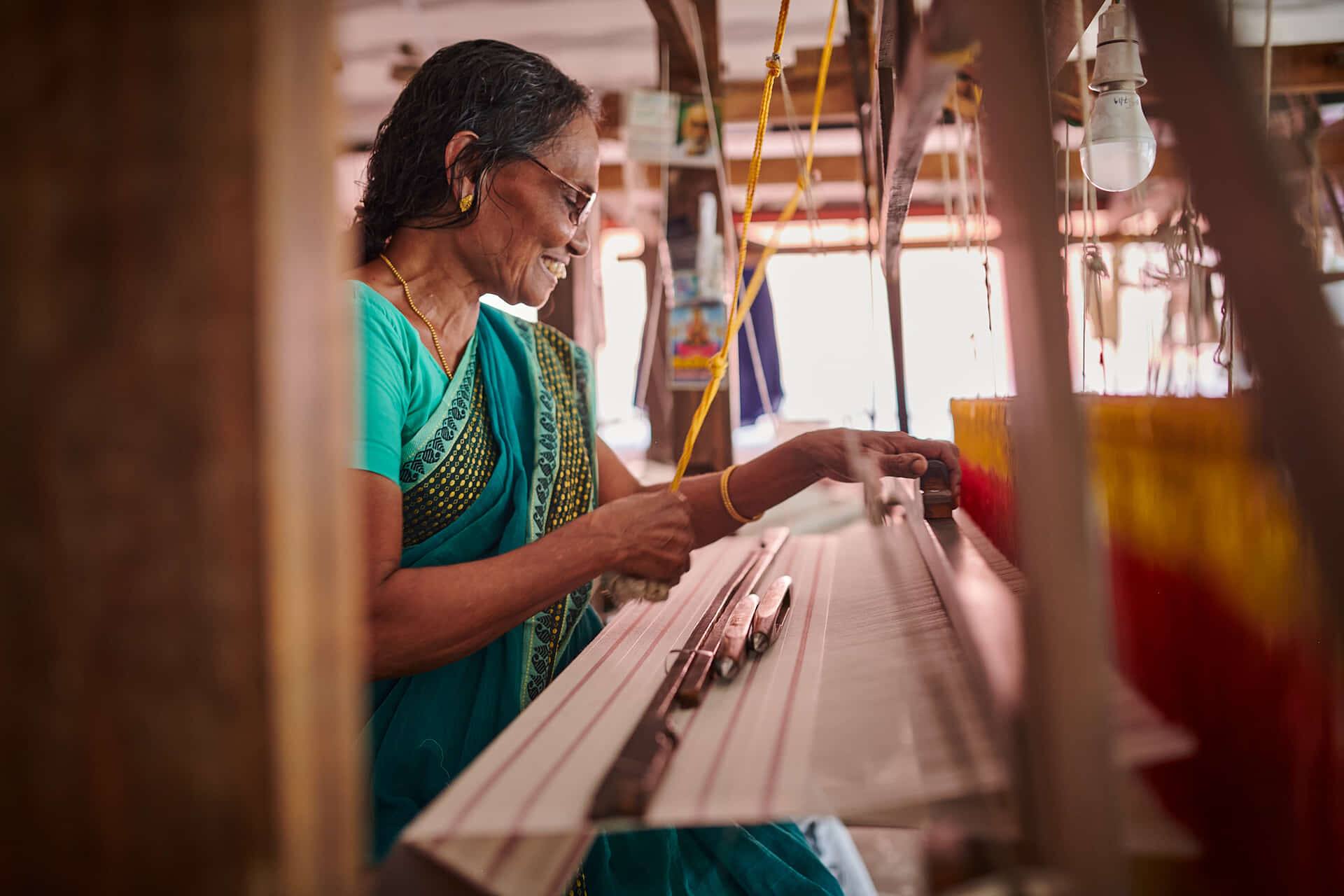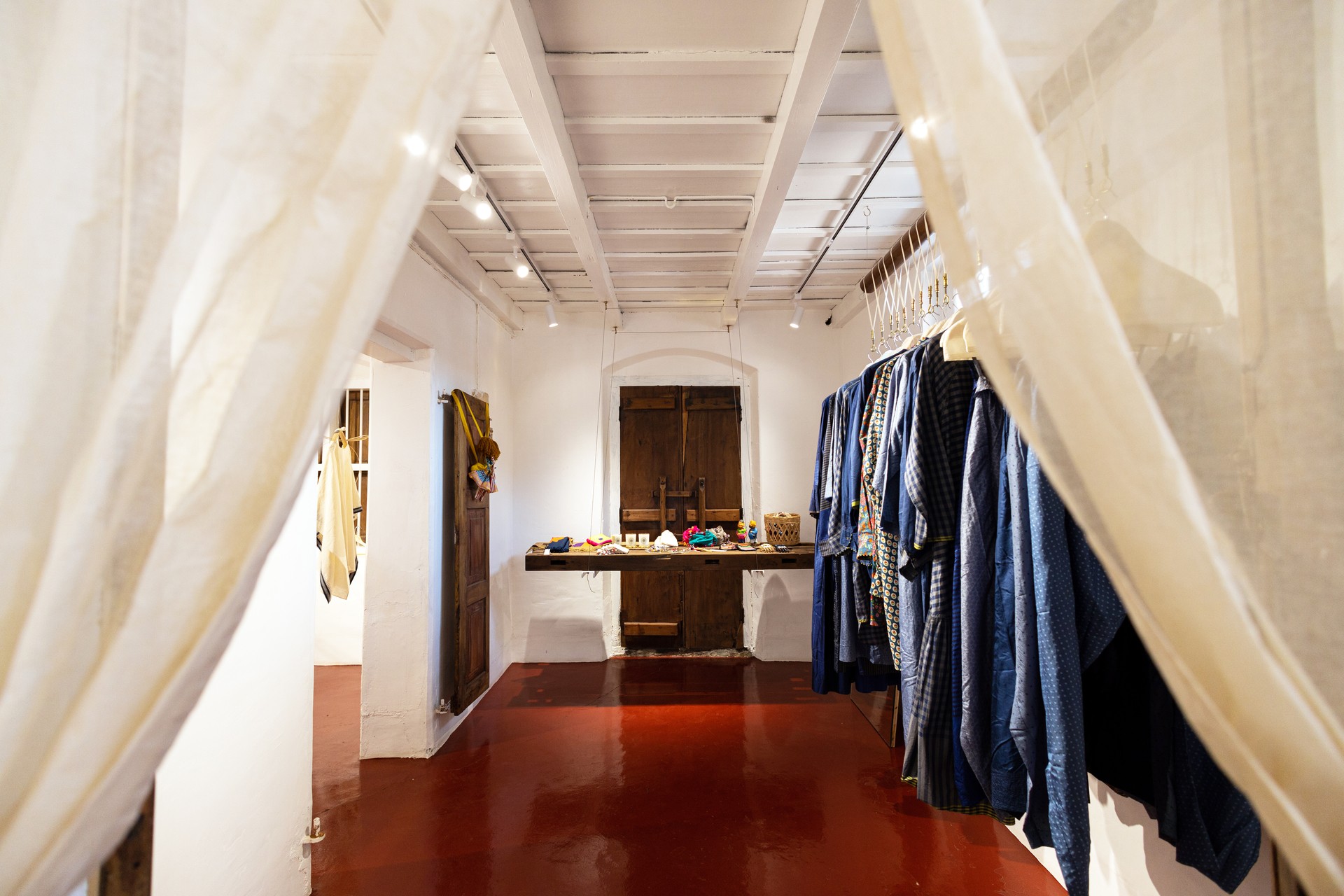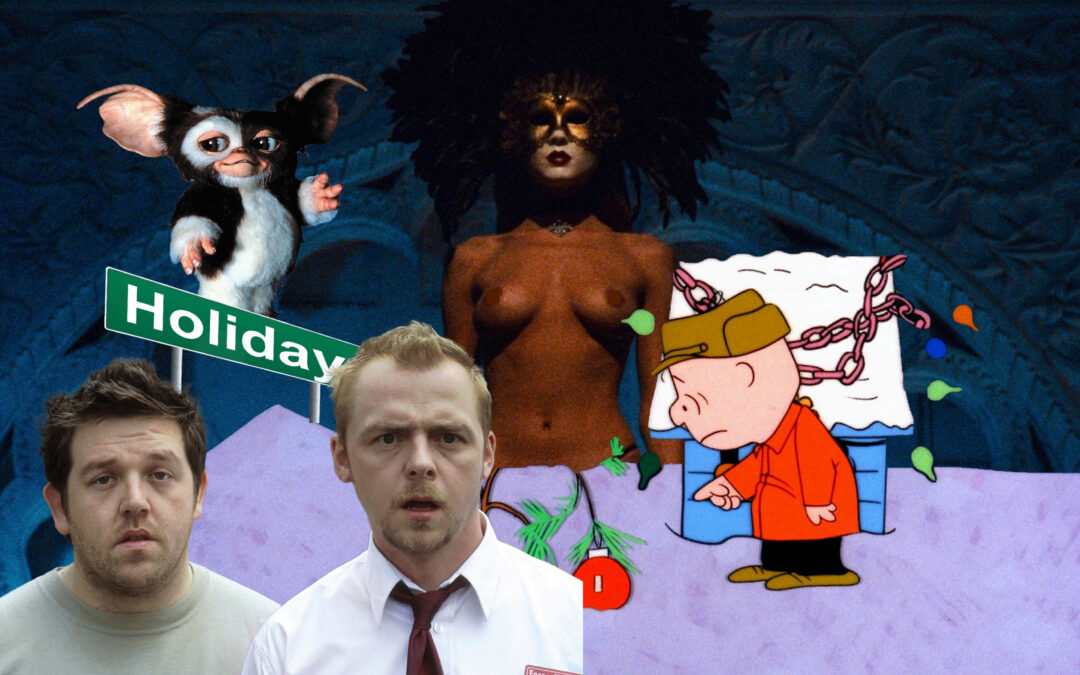In 2018, Kerala province in Southern India faced one of the worst floods in a century. In its wake, over 75 000 homes were destroyed and hundreds of lives lost—including the livelihoods of hundreds of traditional weavers. From that devastation, Save The Loom was born.
Ramesh Menon, a fashion industry professional, who was consulting with the Fashion Design Council of India in Delhi at the time, happened to be in Kerala during the disaster. “When I visited one of the worst-hit weaving villages, I found artisans who had made textiles all their lives left with not even a piece of fabric to wear,” he recalls. “Their homes, workshops and looms—all gone.”
For weavers in Kerala’s Chendamangalam cluster, 23 kms from Kochi, many of whom were women over 45 earning less than three dollars a day, the loss ran deeper. “These people didn’t just lose their tools,” Menon says. “They lost their dignity and their way of life.”
The government’s response was slow, so he decided to act after witnessing a moment of quiet generosity — an elderly man wrote a cheque to help a weaver rebuild his loom. This gave Menon a simple yet revolutionary idea. “That night I realised we had a formula,” he explains. “If one benevolent person could adopt one loom, we could rebuild an entire community without depending on the government.”
Within days, he and friends built a simple website—Save The Loom. It primarily told the artisans stories and documented their homes and synonymously, their work places, to seek support. The site quickly went viral after film actor friends of Menon’s helped spread awareness. “In 48 hours, people across the world were holding placards saying ‘We Are With You Chendamangalam’, one of the worst hit weaving villages. The website crashed from thousands of emails from people asking how to help. We weren’t prepared for that kind of love.” People around the world clearly had a desire to make a tangible impact.

All imagery courtesy of Save The Loom

In just 100 days, Save The Loom restored all 273 looms—without a rupee of government funding. But as Menon and his team dug further, they discovered a deeper crisis. “The craft was vanishing,” he says. “That’s when we decided this couldn’t just be a relief project—it had to be a movement.”
When I met Ramesh this April 2025 at the One Zero Eight Store in Kochi, I could feel that this was no ordinary nonprofit story. There was something transformative — even defiant — about the way he spoke of weaving, of dignity and labor. His words carried the quiet power of conviction.
Menon discussed how indigenous textile techniques are becoming extinct, with some of the finest examples only found in museums. The oldest example is in the V&A Museum in London. He emphasised that handmade products from India represent true luxury, especially given that India produces 95% of the world’s handmade textiles. The younger generation no longer want to be seen “doing physical labor. They’d rather work in a call centre” where there’s a perception of an elevated working environment. “The biggest problem isn’t money,” Menon says, “it’s the dignity of labor. A craftsman who has inherited centuries of knowledge is seen as a worker, not an artist. We’ve failed to give them respect.”
Save The Loom, therefore, became much more than a relief project — it became a social movement reimagining value itself. “People don’t bargain in a Gucci store,” Menon notes pointedly. “But when they walk into a craft shop, they ask for a discount. People tend to make artisans justify their prices and their existence. It’s as if they’re being punished for making something by hand.”
Then, almost as if to punctuate the thought, he adds the line that has since become the soul of his work: “You don’t buy craft to do good. You buy it because it’s the highest form of luxury a human being can own.”
Today, the global fashion world is awash with sustainability pledges and circularity strategies, yet Menon reminds us that India’s handloom communities have always lived sustainably. “The world talks about sustainability as if it’s a new invention,” he smiles. “But India’s weavers have lived sustainably for thousands of years — no electricity, no waste, zero carbon footprint. They coexist with nature.”
He smiles wryly when he hears the fashion world’s latest sustainability buzzwords. “Now everyone talks about thrifting and mending as cool, modern ideas,” he says. “In India, that was just life. Clothes were passed down, repaired, reused, until the last thread. Nothing went to waste.”
What has changed, he argues, is not the craft — but the story told around it. “Tradition is not a bad word. It’s the future. It’s the foundation of everything that works.”
Save The Loom has become a storytelling movement as much as a design one. Its collaborations with contemporary designers and its pop-up spaces around India position handloom not as ethnic nostalgia, but as living design.

Oze Zero Eight by Save The Loom. All imagery courtesy of Save The Loom

Oze Zero Eight by Save The Loom. All imagery courtesy of Save The Loom
For Menon, storytelling is both a tool and a burden. “We love telling stories about our artisans, but it’s painful that we have to justify what we do. Nobody asks a luxury brand why their bag costs thousands of dollars, but an artisan is forced to explain every stitch.”
He believes storytelling should be about visibility, not validation. “Artisans remain anonymous. They have no name, no credit, no dignity. A designer spends three years in college and becomes a brand. A weaver spends thirty years perfecting a skill and remains invisible. That’s the imbalance we must change.”
What struck me most in our conversation was Menon’s radical yet practical call to action. “You don’t need money to do good,” he explains. “If you’re a writer, designer, musician, or doctor — give ten days of your time each year to mentor someone who needs it. That’s time banking. It’s not charity, it’s collaboration.”
This, he believes, is how a new ecosystem of dignity, respect, and sustainability can emerge — not through pity or donation, but through participation and shared value.
Menon closes our conversation with a quote from Gandhi that still guides him: “The world has enough for every man’s need, but not for his greed.” He pauses. “Nature gives us everything we need to live beautifully — the fibers, the dyes, the wood, the stone. But we destroy to create, while animals live in harmony with what is already there. We need to remember that sustainability isn’t something you can buy in a store. It’s a way of thinking. A way of living.”
Through Save The Loom, Menon and his team are proving that tradition isn’t a relic. Each thread, each loom, each artisan represents not just India’s past and deep traditions, but humanity’s shared future. Menon’s closing thoughts linger with me, “The future lies in the hands that make.”
Learn more about Save The Loom here
Follow Save The Loom on Instagram
Shop at One Zero Eight by Save The Loom here
Written by Grace Crooks
For more news, visit the Connect Everything Collective homepage www.ceconline.co.za














